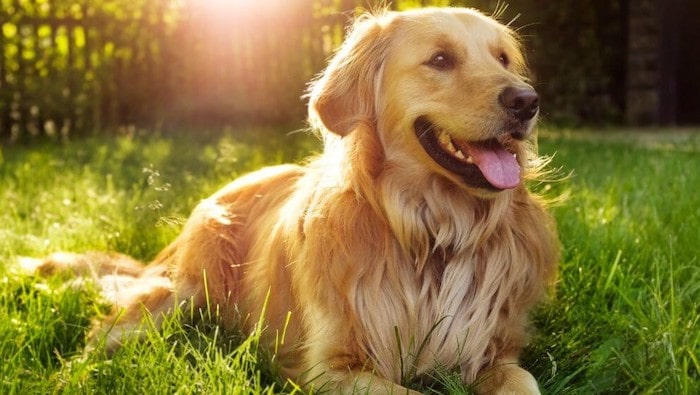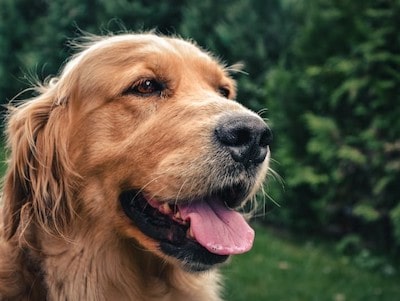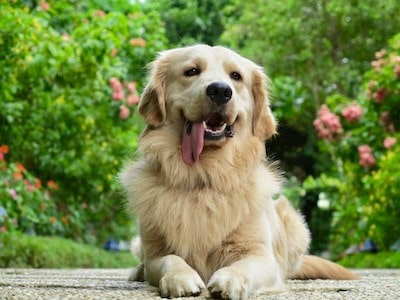If you’ve ever spent time with a dog, you’ve probably noticed them panting at some point. Whether it’s after a long play session, during a hot day, or even when they seem perfectly relaxed, panting is a common behavior among our canine companions. But have you ever wondered why dogs pant?
In this article, we’ll be peeling back the layers of this intriguing topic, shedding light on the various reasons why dogs pant and the role it plays in their lives. From natural cooling mechanisms to emotional expressions, dogs have a lot to say through their panting, and we’re here to decipher their messages.
So, join us on this journey as we uncover the science and secrets behind why dogs pant, enriching our bond with them and enhancing our ability to care for their well-being. Let’s embark on this adventure of discovery and gain a deeper appreciation for the incredible companions we call “man’s best friend.”
What Is Panting and Why Is It Important for Dogs to Regulate Their Body Temperature?
Panting is a dog’s way of cooling off. Dogs don’t sweat through their skin like humans do. While their paws have sweat glands, they’re only minimally helpful at cooling. Instead, dogs pant as a way to “sweat” water from their mouth and upper respiratory tract.
Panting can be defined as quick, shallow breaths, and for dogs, this is usually accompanied by their tongue hanging out of their mouth. By panting with the mouth open, dogs are cooling down courtesy of evaporation as the moist surfaces of the mouth help lower the dog’s core temperature.

Dogs are more prone to feeling warm compared to humans for several reasons. Firstly, their bodies are covered in fur, and secondly, dogs tend to have a naturally higher temperature than humans (101 to 102.5 degrees Fahrenheit versus 98.6 degrees Fahrenheit in humans).
Regulating body temperature is important for dogs because it affects their metabolism, organ function, and overall health. If a dog’s body temperature gets too high or too low, it can cause serious problems or even death. Therefore, panting is a vital mechanism for dogs to maintain an optimal internal core temperature.
Normal Causes of Panting in Dogs
There are many situations that can make dogs pant normally. Here are some of the most common ones:
- Heat: Dogs pant when they are hot or exposed to high temperatures. This is especially common during the warm and humid summer months when dogs need to cool themselves down. You may see your dog panting when they are out in the yard, laying on the cool floor, or seeking shade.
- Excitement: Dogs pant when they are excited or happy. Panting acts as a way to express their emotions and release some energy. You may see your dog panting when they meet new people, get a treat, or play with their favorite toy.

- Exercise: Dogs pant when they exert themselves physically. Panting helps them recover from the activity and replenish oxygen in their muscles. You may see your dog panting after a walk, a run, or a game of fetch.
- Stress: Dogs pant when they are stressed or anxious. Panting acts as a way to cope with the situation and calm themselves down. You may see your dog panting when they encounter something scary, unfamiliar, or unpleasant.
Abnormal Causes of Panting in Dogs
While panting is normal in many cases, it can also indicate a medical issue that needs attention. Some of the medical conditions that can cause excessive or abnormal panting in dogs are:
- Heatstroke: Heatstroke is a life-threatening condition that occurs when a dog’s body temperature rises above 106 degrees Fahrenheit. It can be caused by exposure to extreme heat, lack of water, or overexertion. Symptoms of heatstroke include heavy panting, drooling, weakness, collapse, seizures, and coma.
- Cushing’s disease: Cushing’s disease is a hormonal disorder that occurs when a dog’s body produces too much cortisol, a stress hormone. It can be caused by a tumor in the pituitary gland or the adrenal gland. Symptoms of Cushing’s disease include increased thirst, hunger, urination, panting, hair loss, pot-belly appearance, and skin infections.

- Heart or lung problems: Heart or lung problems can affect a dog’s ability to breathe normally and deliver oxygen to the body. They can be caused by various factors such as age, breed, infection, injury, or disease. Symptoms of heart or lung problems include coughing, wheezing, fainting, bluish gums, and rapid or shallow panting.
- Pain: Pain can cause a dog to pant excessively as a way to cope with the discomfort and distress. It can be caused by various factors such as injury, surgery, arthritis, dental problems, or cancer. Symptoms of pain include whimpering, limping, licking, hiding, and restless panting.
How to Tell If Your Dog’s Panting Is a Problem
It is not always easy to tell if your dog’s panting is normal or a sign of trouble. However, there are some clues that can help you determine if your dog needs veterinary attention. Here are some tips on how to tell if your dog’s panting is a problem:
- Check the context: Consider the situation in which your dog is panting. Is it hot, exciting, or stressful? Is your dog exercising or resting? Is your dog panting more than usual or for longer than usual? If your dog’s panting does not match the context or seems excessive, it may be a problem.

- Check the appearance: Look at your dog’s appearance and body language. Is your dog’s tongue very long, wide, or dark? Is your dog’s mouth very dry or foamy? Is your dog’s breathing very fast, loud, or labored? Is your dog showing signs of distress, such as wide eyes, ears back, or tail tucked? If your dog’s appearance or body language seems abnormal, it may be a problem.
- Check for other symptoms: Look for other symptoms that may accompany your dog’s panting. Is your dog drinking more water than usual? Is your dog eating more or less than usual? Is your dog urinating more or less than usual? Is your dog losing weight or hair? Is your dog coughing, wheezing, or fainting? If your dog has other symptoms along with panting, it may be a problem.
What to Do If Your Dog Is Panting Too Much?
If you suspect that your dog is panting too much, there are some steps you can take to help them. Here are some suggestions on what to do if your dog is panting too much:
- Help them cool down: If your dog is panting because of heat, you should try to lower their body temperature as soon as possible. Move them to a cool and shady place, offer them fresh water, and apply cool wet towels to their head, neck, chest, and paws. Avoid using ice or cold water as this can cause shock. Monitor their temperature with a thermometer and stop cooling them when it reaches 103 degrees Fahrenheit.

- Help them calm down: If your dog is panting because of excitement, stress, or pain, you should try to soothe them and make them comfortable. Speak to them in a calm and gentle voice, pet them softly, and offer them a toy or a treat. Avoid scolding them or forcing them to do something they don’t want to do. If possible, remove them from the source of stress or discomfort.
- Seek veterinary care: If your dog is panting excessively or abnormally, you should consult your veterinarian as soon as possible. Your veterinarian can examine your dog and perform tests to diagnose the cause of the panting and prescribe the appropriate treatment. Some conditions that cause panting may require emergency care, such as heatstroke, heart failure, or poisoning. Do not delay seeking help if you notice any signs of trouble.
FAQs
Yes, anxiety or stress can lead to excessive panting in dogs. Panting can be a manifestation of their emotional state, and it may accompany behaviors like trembling or restlessness. If your dog is displaying unusual panting patterns due to anxiety, it’s essential to identify the triggers and provide a comforting environment to help them relax.
Certain dog breeds are more prone to panting due to their physical characteristics. Brachycephalic breeds (short-nosed dogs like Bulldogs and Pugs) have narrower airways, which can lead to breathing difficulties and increased panting. Additionally, dogs with thick coats or those living in warmer climates may pant more to cope with heat.
Light panting during sleep can be normal and is often associated with a dog’s dream activity or mild changes in their body temperature. However, if the panting is excessive or accompanied by other signs of discomfort, it’s best to consult a veterinarian to rule out any underlying issues.
While you can’t train your dog to stop panting (as it’s a natural physiological response), you can help them manage their environment and provide comfort during stressful situations. Positive reinforcement training and desensitization techniques may also help reduce anxiety-related panting.
Conclusion
In conclusion, the act of panting in dogs is a multi-faceted behavior that serves as a vital means of communication and regulation for our beloved four-legged companions. Whether they’re cooling off after play, expressing emotions like stress or anxiety, or indicating potential health issues, panting plays a significant role in their lives.
As responsible pet owners, it is our duty to pay close attention to our furry friends’ panting patterns and behavior. By understanding the various reasons behind why dogs pant, we can better meet their needs, keep them comfortable during hot weather, and address any potential health concerns promptly.

Ellis is a retired veterinary technician and full-time contributor at DogLovesBest. He likes writing about pet health care tips and reviews the products that are useful for fidos on a daily basis.
Ellis also guardians a Siberian husky, Nova, and a cat named Shilly. They all live happily with his wife Ammy, and both the dogs on a seaside apartment in Queens, NY.
